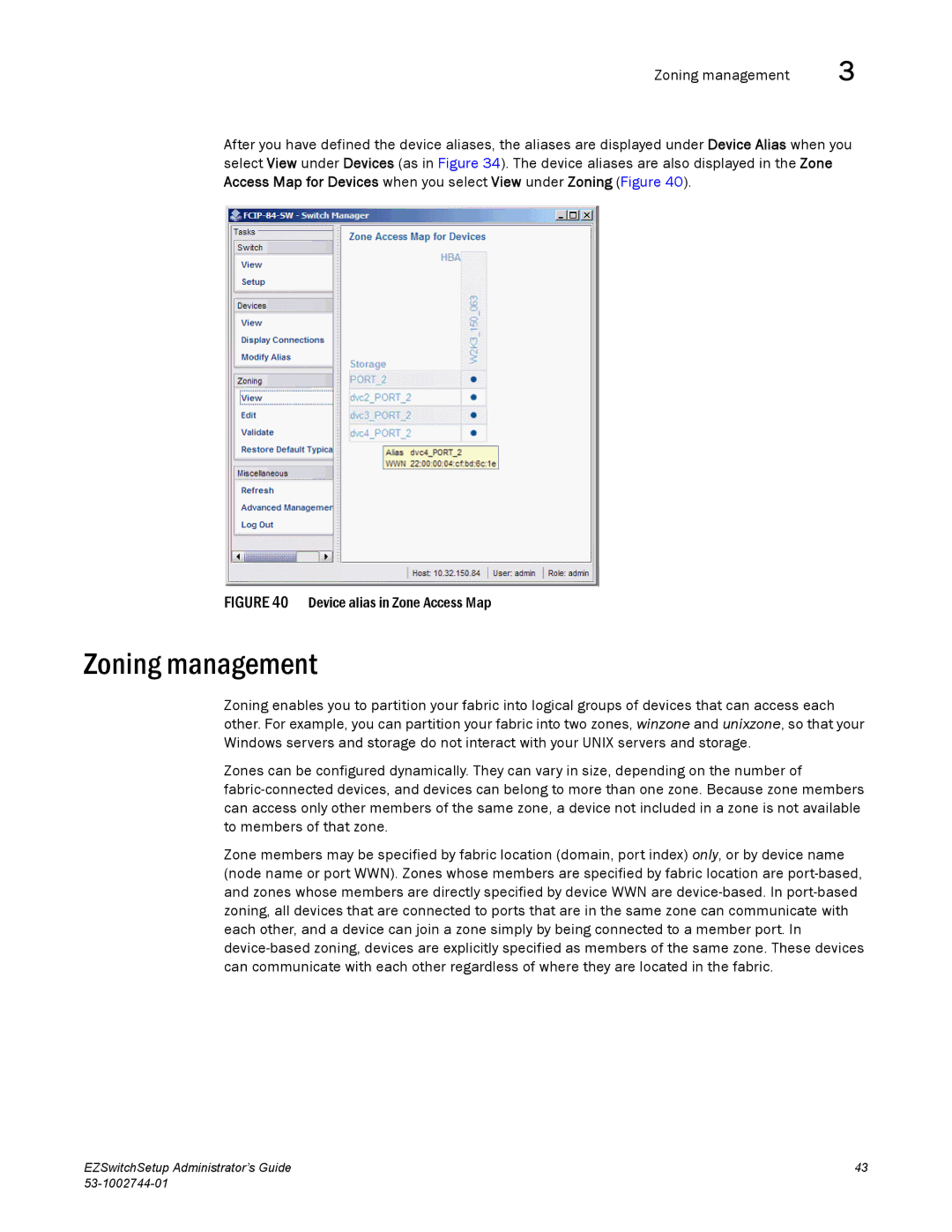
Zoning management | 3 |
After you have defined the device aliases, the aliases are displayed under Device Alias when you select View under Devices (as in Figure 34). The device aliases are also displayed in the Zone Access Map for Devices when you select View under Zoning (Figure 40).
FIGURE 40 Device alias in Zone Access Map
Zoning management
Zoning enables you to partition your fabric into logical groups of devices that can access each other. For example, you can partition your fabric into two zones, winzone and unixzone, so that your Windows servers and storage do not interact with your UNIX servers and storage.
Zones can be configured dynamically. They can vary in size, depending on the number of
Zone members may be specified by fabric location (domain, port index) only, or by device name (node name or port WWN). Zones whose members are specified by fabric location are
EZSwitchSetup Administrator’s Guide | 43 |
|
